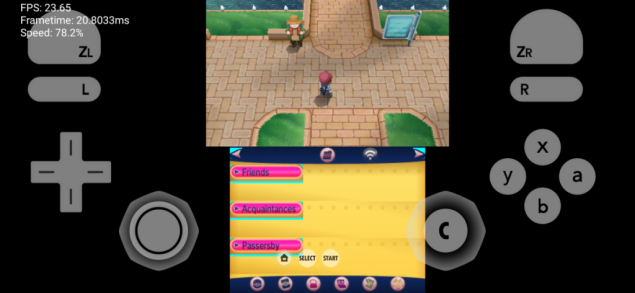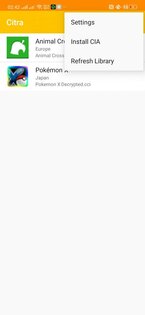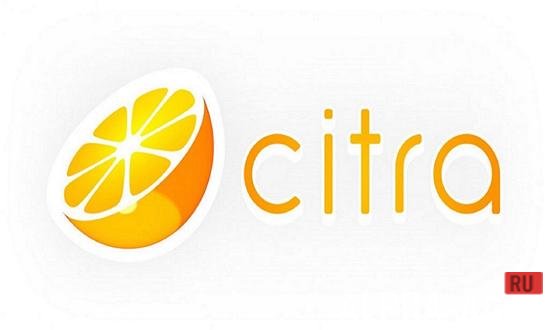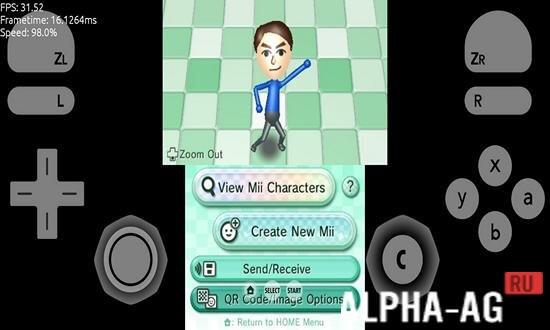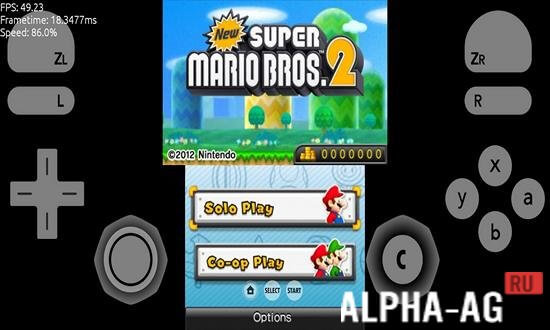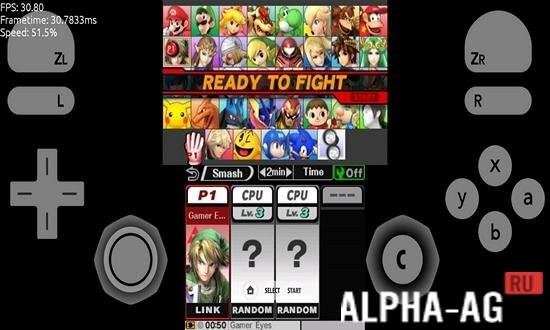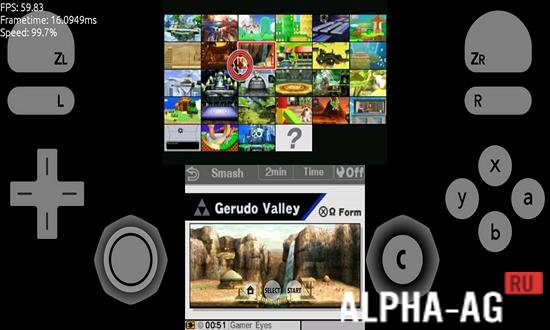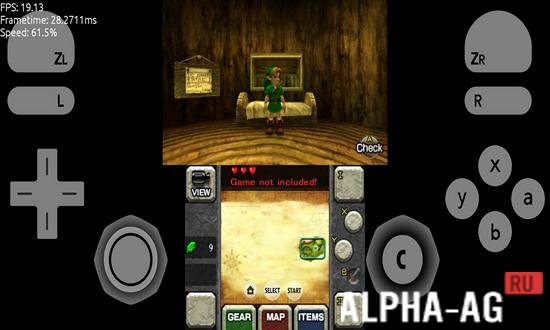- Citra emulator android last
- Features
- System requirements
- Update
- Beta 15
- Assets
- Assets
- Beta 13
- Assets
- Beta 12
- Assets
- Beta 11
- Assets
- Beta 10
- Assets
- Beta 9
- Assets
- Beta 8
- Assets
- Beta 7
- Assets
- Beta 6
- Assets
- Citra Emulator bed6a4f12
- Citra Emulator Premium
- Геймплей
- Ключевые особенности
- Citra Android is here!
- Users and Devs — A Tale of Perspectives!
- Discord FAQ (Old vs. New)
- Changing Times and Changing Priorities
- History of Citra — Design Decisions
- Development
- Before
- After
- I’m using tilt controls!
Citra emulator android last
Citra is a new emulator for Android OS, enabling you to play your favorite Nintendo 3DS games on your smartphone (also on iOS, Windows and MacOS).
The Citra app does not include any games, or copyrighted system files. You are legally required to dump your games to use with Citra. The Citra app is not affiliated, associated, authorized, endorsed by, or in any way officially connected with any company that manufactures portable gaming consoles.
Put your games in .3ds format into your internal storage or SD card and select them from the main app menu.
Features
Last build release include:
- Compatibility with hundreds of games
- Enhanced graphics, such as resolution scaling and texture filtering (these optional features work best on high-end devices)
- Support for various built-in features, such as the camera, microphone, and motion controls
- Support for external gamepads
- Citra emulator for Android offers a Premium in-app purchase that will unlock some cosmetic features, including the Dark theme and additional texture filtering options
- Please consider upgrading, as our developers spend hundreds of hours of their free time contributing to the project.
The Citra app is licensed by the GNU GPL v2.
System requirements
| OS version | Android 4.4 (or higher) |
| CPU | Quad core 1.5+ Ghz |
| RAM | 1 GB (2 GB recommended) |
| Disk space | 50 MB |
The table lists the minimum system requirements for running Citra emulator Android
Update
•Merge latest fixes & improvements from upstream Citra.
•Implemented switch for sliding finger across D-Pad and fix sensitivity (only for Android OS 6.0+).
•Disable sensors when emulation is paused.
•External controllers support, such as the MOGA controllers (only for Android OS 5.0+)
•New clean & simple yet well-designed user interface. Seamlessly integrated with the latest OS version
Leave your vote on this app!
Average rating 4.6 / 5. Vote count: 262
No votes so far! Be the first to rate this app.
As you found this app useful.
Follow us on social media!
We are sorry that this app was not useful for you!
Источник
Beta 15
Assets
- Merge latest fixes & improvements from upstream Citra.
Assets
Beta 13
- Improves frame presentation & fixes various crashes.
- Merge latest fixes & improvements from upstream Citra.
Assets
Beta 12
- Add support for save states.
- Merge latest fixes & improvements from upstream Citra.
Assets
Beta 11
- Implemented switch for sliding finger across D-Pad and fix sensitivity.
- Disable sensors when emulation is paused.
- Merge latest fixes & improvements from upstream Citra.
Assets
Beta 10
- Fix issues with increasing emulation speed.
- Add support for stereoscopic 3D/Cardboard VR.
- Merge latest fixes & improvements from upstream Citra.
Assets
Beta 9
- gl_shader_decompiler: Improve performance of accurate_mul on Android.
- Use separate texture buffer for light and fog (fixes MH4U black UI and texture flickering).
- Reintroduce frame presentation on the UI thread.
Assets
Beta 8
- Minor fixes to the UX.
- Update dynarmic.
Assets
Beta 7
- CheckBoxSetting: Fix a ClassCastException exception with isChecked.
- MainActivity: Fix a nullptr exception with onSaveInstanceState.
- SettingsFragmentPresenter: Fix a nullptr exception with loadSettingsList.
- Revert «Presenting in ui thread», as this caused UI lag.
Assets
Beta 6
- Reload game specific settings when settings are changed in game.
- Move frame presentation to the UI thread.
- Disable depth/stencil shader in texture_downloader_es for ShieldTV.
- Fix various touch screen issues.
- Clamp the circle pad bounds to a circle instead of a square.
Assets
You can’t perform that action at this time.
You signed in with another tab or window. Reload to refresh your session. You signed out in another tab or window. Reload to refresh your session.
Источник
Citra Emulator bed6a4f12
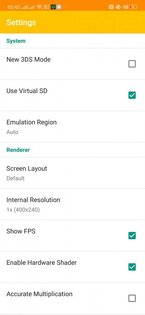
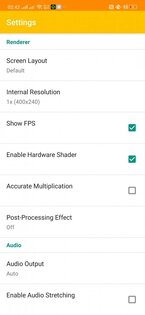
Citra MMJ 3DS Emulator – это эмулятор старой доброй игровой приставки Nintendo, который позволит играть в любимые игры на максимальной скорости.
Большинство настоящих олдфагов еще помнит те времена, когда единственное, чего хотелось в жизни, это немного сладостей и поиграть в приставку. Сколько всего связано с этими прекрасными и забавными играми! И вот теперь у вас снова есть возможность окунуться в детство и испытать былые чувства. Citra предоставит вам и скорость и улучшенное качество игр, от вас же требуется только немного свободного времени и хорошее настроение!
Настройки экрана, управления и горячих кнопок, здесь есть абсолютно все для комфортного гейминга! С помощью Citra вы сможете играть в любые игры для Nintendo и даже не задумываться о возможных неполадках. Так во что же будете играть сегодня: в Pokemon Sun and Moon или в The Legend of Zelda: A Link Between Worlds?
Особенности приложения Citra MMJ 3DS Emulator:
- Возможность настройки экрана;
- Множество настраиваемых виртуальных кнопок;
- Никаких багов и лагов;
- Простой интерфейс;
- Поддержка любых игр для Nintendo.
Источник
Citra Emulator Premium
Современный эмулятор для консольной приставки Nintendo 3DS, с помощью которого вы сможете играть в любимые игры на своем устройстве.
Геймплей
Если вы ностальгируете по старым добрым играм на приставку, то установите данный эмулятор, который поможет вам снова насладиться игровым процессом в своих любимых играх, только в этот раз на своем смартфоне.
В этом приложении, как и во всех подобных эмуляторов нет встроенных игр, поэтому вам нужно будет их загружать самостоятельно.
Когда вы скачаете игру, в которую вы хотите поиграть, вам нужно будет показать её приложению, где она находиться и после начать играть. После эмуляции игры приложение будет отображать вам два экрана основной и дополнительный, как и в оригинальной приставке.
На первом экране будет происходить основной геймплей, а на втором вы будете видеть дополнительную информацию, которую сможете использовать в игре.
Что касается управления, то вы сможете сами настроить расположение виртуальных кнопок в реальном времени, а также все кнопки настроить по своему вкусу.
Ключевые особенности
Один из самых лучших эмуляторов, который поддерживает огромное количество игр для супер консольной приставки Nintendo 3DS и при этом большинство из них обладают лучшей графикой, чем в оригинале.
В любой игре вы сможете воспользоваться чит-кодами, которые сделают ваш игровой процесс еще интересней. А также вы сможете подключить геймпад к своему устройству, чтобы вам было еще удобней играть в свои любимые игры.
Источник
Citra Android is here!
Hello there emulation aficionados! Today we are unveiling the most requested addition for Citra: Android Support!
That’s right, you can finally play 3DS games on the go!
Users and Devs — A Tale of Perspectives!
Citra has great game compatibility and performance (provided you have the hardware), cross-platform support, multiplayer support, and much more. But ever since Citra Desktop achieved a stable state, the most requested feature has been something entirely unrelated to the core emulation.
Users began requesting a portable version of it. Being an emulator for the 3DS, a handheld console, they wanted something they could carry everywhere and play games anywhere, and it came in the form of an Android app. During the glory days of Citra development, users would ask almost daily if we had an Android app or if we planned to make one. This had become such a frequent occurence that we had to add it to our Discord server FAQ. Do you plan on making an Android app? No, not at this moment.
Discord FAQ (Old vs. New)
From the users’ perspective, it seemed as if the devs disliked the idea of an Android app. But for the developers, it was just the abundance of many other features and improvements that took higher priority. And given the huge amount of effort for an Android version, we simply did not have enough time for it.
Changing Times and Changing Priorities
This was all back in 2016
17. Fast forward to 2018 and suddenly there it was! SachinVin, a developer then outside of the core team, worked hard to port Citra to Android and finally the first iteration of a mobile app was released.
While it granted users their long awaited request, it suffered from quite a lot of performance issues. This led to an increase in support and feature requests of the official team — who had nothing to do with that unoffical Android port. So while the team applauded the efforts of this developer, we had to deny providing support for it because it was unofficial.
However, what users didn’t know was that due to rising demand for an official Android app, members of our developer team had been working on an Android version themselves. To reduce redundant work, we invited SachinVin to collaborate, bringing us closer to an official Android release.
History of Citra — Design Decisions
From the very beginning, Citra was developed with cross-platform compatibility in mind. We have always supported all three major OS platforms — Windows, macOS, and Linux — but that’s not all. If you took a look at a Citra build folder for Windows, you’d find two executables citra.exe and citra-qt.exe (which also caused a lot of confusion for a while).
This is because, Citra supports two interfaces:
- A basic CLI (command line interface) powered by SDL.
- A fully featured GUI (graphical user interface) powered by Qt.
In this way, developers can ensure that UI elements are decoupled from the core, so that new frontends can be implemented. This separation of code logic for core emulation and UI elements paved the way for a smoother development process for Android. But it wasn’t an easy journey.
Development
For almost a year, bunnei has helmed this development effort and has pulled other developers into working on this. He figured that since nobody in the core team had any experience with Android development, someone had to start things off somewhere. Development started as a basic app with the frontend based off of Dolphin’s Android app. SachinVin added initial OpenGL ES support. Then we added the core components of Citra to the app, and games were booting and playable!
But it still had many bugs and issues: the settings weren’t saving, the button overlay was clipped, there were multiple layout issues, graphical issues, and much more. Android being a diverse OS, each fix had to be extensively tested on a plethora of devices to make sure it didn’t break anything else. jroweboy also started optimizing many areas of the code to bring in multiple small performance gains, which added up to a large performance improvement.
Before
After
While this was going on, SachinVin was working on implementing an ARM64 backend for Dynarmic. Dynarmic is Citra’s Just-in-Time (JIT) CPU compiler, which is used to emulate the ARM CPU in Citra. While many Android devices also use the ARM architecture, there are complications that arise when you try to run unmodified instructions from a 3DS game. So we have to recompile the code on the fly, with our CPU JIT, to make them work on Android. Thanks to SachinVin’s work, performance received a huge boost.
Mobile CPUs aren’t even remotely as powerful as desktop CPUs, so we needed to take full advantage of their multiple cores. That was why we ported over a feature — Async GPU emulation — from our sister project, yuzu. GPU emulation is now done on a separate core, significantly improving performance.
The work that started as a basic app soon shifted gears and turned into a full blown effort to release a user-ready Android port. We then started looking closely at its usability and began improving the UI/UX. A few of the settings available on the desktop version didn’t apply to the Android version. And since we were trying to improve usability, we revamped the settings menu to keep things simple. Flamboyant Ham helped ensure that the UI met certain accessibility standards, and designed the new controller overlay — thus helped add support for all the 3DS buttons.
All of this development work finally paid off and we had a performant app. However, just when we thought we could release an alpha version, another unofficial Android port appeared! It came as a shock to us when we found that this port had taken some leaked changes from our Android development branch (such as our JIT backend and graphical fixes), added further hacks, and did not exactly comply with the GPL. Users began flooding our forums and Discord asking why we hadn’t released an official port, when an unofficial one was performing great.
Despite these hardships, our progress was not hindered. Having previously dealt with the nuisance of modified “custom” builds, we were concerned about how easily our changes would just be incorporated into other unofficial builds, without upstreaming any new improvements, if the source was made public prior to the app release. Thus the team became even stricter. They worked behind-the-scenes and slowly but surely implemented missing functionality, fixed bugs, improved performance, and (most importantly) polished the app UI for a smooth and hassle-free user experience.
Fast forward to February 2020, after taking a hiatus to work on yuzu, bunnei reignited the flames and development picked up pace again. Anticipating the desire for gamepad support, bunnei decided to implement the feature. Users who dislike touchscreen controls can rejoice! Technically, almost all gamepads should work, but if your gamepad doesn’t work with the app, please reach out to us on our Discord server.
BreadFish64 contributed various OpenGL ES improvements and fixed many graphical glitches we had been experiencing. He also added support for motion controls, recursive folder scanning, installed title detection, texture filtering, and made some general improvements to the app. Motion control support works by leveraging the gyroscopes that exist in almost every modern Android device.
I’m using tilt controls!
FearlessTobi, who has been well known for taking both the time and effort to ensure changes from Dolphin and yuzu are upstreamed to Citra, ported many changes and fixes to the Android frontend from Dolphin upstream. He added support for Amiibo files, translations, and the microphone (if your Android device has one). This improves compatibility with the few games (like WarioWare Gold) that use the 3DS microphone. Furthermore, he cleaned up the codebase, removing a lot of unused stuff, and proceeded to fix various bugs related to the themes, gamelist, UI, games database, and more.
zhaowenlan1779, who originally implemented camera support, the software keyboard applet, multiplayer fixes, and many more improvements to Citra Desktop, expressed his interest in the Android development. He added native camera support, implemented the software keyboard applet and a Mii Selector in the Android app. Thanks to his work, Citra Android can now utilize the camera on your device, or images saved to your phone, for scanning QR codes and more. And, the software keyboard applet will enable users to input text with the Android keyboard app on Citra when playing games that need it. He also implemented a Mii Selector for the Android app, making it easier to use your Miis, and improved Tobi’s microphone support.
weihuoya, a first-time contributor and the developer behind the second unofficial port, implemented AAC decoding support for Android. If you recall, AAC decoding was the culprit behind many games crashing on Citra e.g. Pokémon X/Y . He implemented native AAC decoding using the MediaNDK library that comes bundled with Android. He also made a few changes to Citra Desktop that translated to performance gains in the Android version.
Here are a few screenshots of various games running on the app:
Источник
